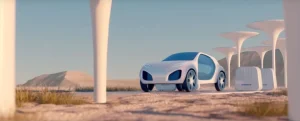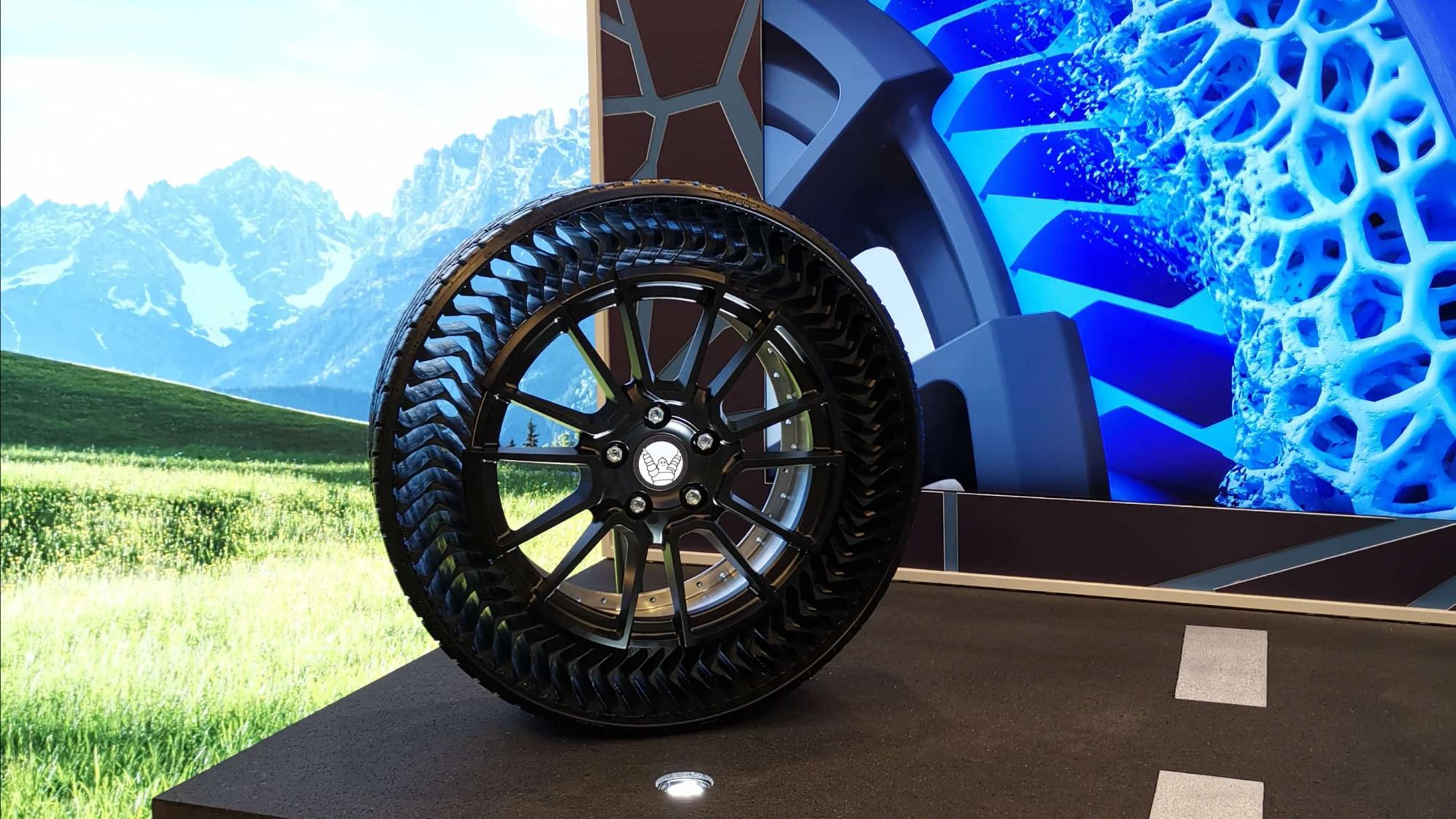Michelin, a French multinational tire manufacturing company and a global manufacturing powerhouse, has unveiled a groundbreaking invention that could be the future of transportation: airless tires. This new technology seeks to revolutionize the tire industry by offering a maintenance-free, environmentally friendly, and safer alternative to traditional pneumatic—air-filled—rubber tires. Although this technology was originally introduced in 2005, it has significant potential for the future and, thus, deserves some attention.
The Tweel, Michelin’s main airless tire model, is designed to eliminate the common issues associated with conventional tires, such as punctures, blowouts, and the need for regular pressure maintenance. Michelin even makes the point that these tires can prevent 200 million tires from destruction from punctures or blowouts. A key aspect of the tire lies in its unique construction, which replaces the typical pressurized air compartment of the tire with a new, complex, web-like structure made from a high-strength, flexible material. Despite not having air inflated into these tires, the tire’s structure itself is capable of supporting the vehicle’s weight while providing a smooth ride for its passengers.
The tire’s physical appearance has a tread pattern that is very similar to conventional, air-filled tires. This aspect is used to familiarize drivers with this new technology and the similarities it has with those on existing vehicles. However, the inner structure of the tire is where all the magic happens. Composed of composite rubber and high-strength resin-embedded fiberglass, the lattice-like design of the tire absorbs impacts from roads and distributes the load evenly. This process is very similar to the effect that air has on conventional tires.
Michelin has partnered with General Motors (GM) to develop and launch for passenger cars an airless tire called Uptis (Unique Puncture-Proof Tire System). This new product is the “full-wheel solution requiring specialized rims.” According to Michelin, the Uptis can endure significantly more impact than traditional tires and wheels and will have a “dramatically long lifespan.” The rolling resistance of the tire will only add “around seven percent to the weight of the tire, less than existing run-flat tires do,” according to New Atlas.
There are a variety of benefits associated with Michelin’s airless tires that extend beyond just performance and durability. First of all, the safety concerns of the tire are fully addressed when the tire is driving the vehicle. The puncture-proof nature of the Uptis greatly reduces the risk of accidents caused by sudden tire failure. This point is especially beneficial for high-speed driving and long-distance driving when the risk of tire failure is greater than casual driving at slower speeds.
Furthermore, Michelin’s airless tires significantly simplify vehicle maintenance by removing the need to check air pressure or repair punctures. This is very different from traditional, pneumatic tires where as soon as there is a puncture in the tire, the tire is very likely to deflate on the spot or potentially cause a serious accident if the vehicle keeps on moving. The Uptis is designed to be puncture-proof and remains unscathed even when it encounters various road hazards such as nails, glass, and other sharp debris that will cause flats and blowouts in regular tires. Additionally, because the Uptis does not rely on air pressure to function, there is simply no need for drivers to regularly check the tire pressure and inflate it whenever necessary.

Finally, the longevity of the airless tire also contributes to a reduction of waste products from scrapping the tires, as fewer tires need to be produced and discarded. Thanks to the 3D printed “recharge” technology of the tire, the materials required for creating new treads for the wires are minimized. VISION, Michelin’s sustainable development model for developing its tires, is engineered to lower CO2 emissions by optimizing rolling resistance and its “low rechargeable tread depth”. Michelin even has the revolutionizing aim of using “100% sustainable materials by 2050,” and is doing much to accomplish their goal by that time.
In all, the phenomenal design and the various benefits of Michelin’s airless tires represent a significant leap forward in tire technology. Not only is this new design of tires extremely efficient for drivers, but it also contributes to protecting the environment and does not emit harmful products through its manufacturing process or when it is active on the road. As the product is commercialized much more in the years to come, people will feel the countless benefits of the technology in their lives.








